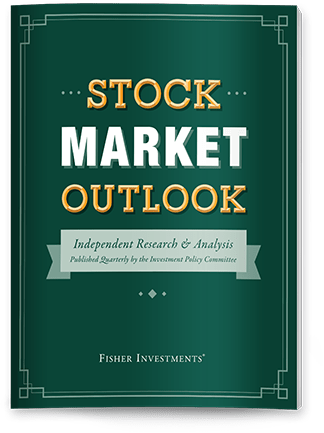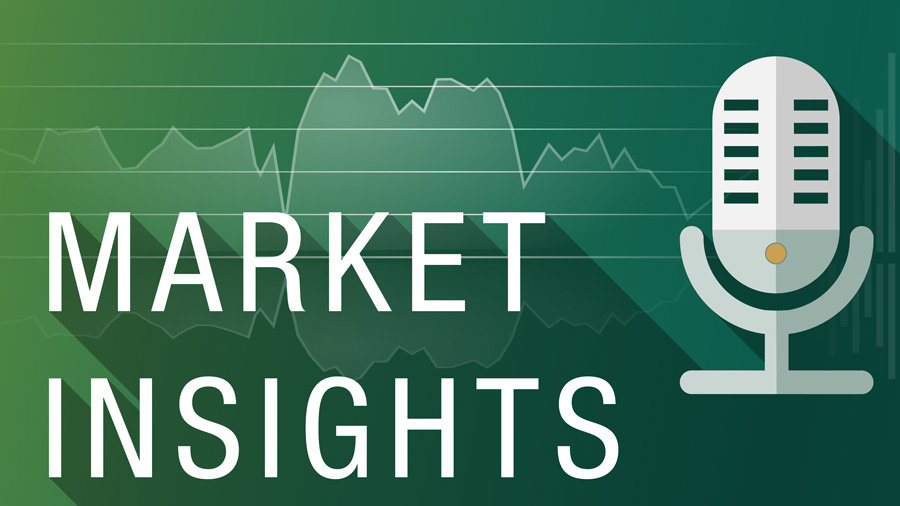Personal Wealth Management / Market Analysis
What Really Causes Inflation?
Ken Fisher, founder and Co-Chief Investment Officer of Fisher Investments, shares his perspective on what drives inflation. While many attribute rising prices to factors like tariffs or government spending, Ken believes these explanations miss the mark. According to Ken, inflation fundamentally results from money supply growth outpacing the economy’s ability to produce goods and services.
Ken expresses the real risk of resurgent inflation lies with how quickly central banks expand the money supply, especially as they weigh changes to interest rates. This doesn’t just apply to the US. Given how easily money moves across borders in the global economy, Ken says it’s important to assess how central banks around the globe are expanding money supply. Today, Ken doesn’t believe inflation will fall as low as some central banks may want, but he also expect a large uptick in inflation barring a markedly faster increase in money supply.
Transcript
You can't get away from people asking, "What are your views about inflation?" "Is it is it resurgent?" "Is it a current risk?" "Do we not have a problem?" I'm just going to tell you that, pretty much my entire career, people have worried about what's going to happen with inflation. When we went through the period of the early phases from the mid 1990s, as inflation kept falling down into the period, through 2019, the concerns on it became less than I ever known them in my over 50 years in the investment business, but they're still there. People always worry about this. I'm going to try and make this real simple. Inflation—I don't care what you say. I don't care what you think. Inflation, as Milton Friedman said when I was young, is always and everywhere a monetary phenomenon. Inflation comes from the diluting of the purchasing power of money. The diluting of it by creating more new money from central banks than the amount of new goods and services that the economy can generate.
Let me take you through that a different way. If the economy is going to grow at 2% a year, and they increase the quantity of money—will come back to some detailing on that in a moment. But if they increase the quantity of money by 5% a year, and that's a steady state and they just keep doing it, you're going to get 3% a year inflation with some volatility in the numbers month-by-month and quarter-by-quarter. The fact is, if economy's going to grow at 2% and they increase the quantity of money by 1%, then you're going to actually get falling prices. It's pretty simple. X + Y = Z. Z is the inflation rate. And yet, there's some inconsistency there. Because from the time that the central bank creates the money, there is a little time lag, the money kind of has to work its way through the economy before the inflation blossoms. The process of keeping an eye on this is really simple.
All of the things that so many people say otherwise are just wrong. They're wrong for many reasons. And in this video, I don't have time to go into all of them. But people will say, and I'm just going to be real clear on this. If you paid any attention to my comments throughout 2025, you know I am not a fan of tariffs, but tariffs do not cause inflation. That's a demonstrable provable fact. Number two—I mean there might be inflation while tariffs happen, but that's because quantity of money is increased. You follow that? It's the cause is the money function, not the tariff function. Inflation does not come from government spending. Government spending at whatever level you want to pick. I don't care. If the quantity of money is growing at a level consistent with the production of goods and services, inflation isn't going to come. We don't have a problem in our culture with very small amounts of inflation. We have a huge problem with big amounts of inflation. You know that. The reality is, central bank here and in most central banks in the world, they want inflation to run at 2% a year. They believe in 2% a year inflation. So, if the growth of GDP was to be 2%, and if they wanted to get 2% of inflation, they'd grow the quantity of money at 4% a year.
But as Milton Friedman also said, when I was young, they really have a hard time doing that because they're so prone as an institution, not just our central bank in America, the Federal Reserve, but also central banks around the world. In most countries, not all countries. Some countries, like, for example, the Kingdom of Saudi Arabia and many other countries, the United Arab Emirates, for example, also Gulf country. They peg their currency to the dollar. They don't have their central bank operate in the way our central bank does, the Euro bank does, the Bank of England does, Bank of Japan does. But all the banks that independently are trying to set their own monetary policy, they just can't keep themselves from acting like little kids in bumper cars at the amusement park. Trying to swerve this way and swerve that way on what they think is the right thing to do.
Now, I'm going to tell you what the right thing to do is, which is to grow the quantity of money at a very steady rate, consistent with what you want the inflation rate to be and what you believe the long term growth of your economy is in real production of goods and services. So again, if you look at our economy right now, in the land of the free and the home of the brave, the real growth of the economy is low. That isn't terrible, but it's not great. And with a low growth in GDP at the level of sub 1%, growing the quantity of money, as if we were growing at 2 or 3%, will generate inflation. We are growing the quantity of money, as let's say measured by M3, there's kind of M1, M2, M3 and M4. But if you take M2, M3, M4, you'll see that we're growing the quantity of money in America a little bit faster than would be consistent with the 2% inflation, which is why inflation is going to hover at about three. And as long as they don't increase the quantity of money faster, it'll stay there.
A fear is that the way the central banks think, they don't really try to think the way Milton Friedman would have taught them when I was young. And he always said they'd never do it right. They don't focus on the growth in the quantity of money, nearly as much as what they think a shift in interest rates will do by adjusting the price of money, short-term loans to the price of the economy. You can't really run an economy that way. It doesn't work. They've tried forever. They keep trying forever. They can't learn. They never learn. The availability of money is more important in the whole function of central banking than the price, but they always focus on the price. So, there is some risk that as they cut rates in September, which they just did, and forecast two more rate cuts ahead and may have more rate cuts ahead than that in 2026, that the quantity of money grows too much, too fast, and inflation becomes resurgent. That's the risk. Will that risk happen? I'm going to tell you how you can watch that. You just go online to an AI system or Google or whatever you want and just real regularly, once a month, adjust to check to see what the growth rate of M2, M3, and M4 is. And while you're at it, go do a little reading on what M2, M3, M4 are so you understand the differences between them. But the fact of the matter is, the average of the three of them will pretty much tell you whether or not there's a growing risk of inflation ahead. Or if inflation can't be brought down from the three to the two that the central bank says it wants. While it feels pressure to cut rates as fear that the economy might go bad.
Now, let me make one more point. It's a little more complicated than what I said in one way that's also easy for you to measure that is not at all inconsistent with anything that I just said. We live in a world where money flows across borders pretty freely, pretty cheaply, whenever it sees opportunity. Cross-border transactions, which were very hard to do when I was a young man, are very easy to do today, and inflation tends to want to flow around the world. So, it is important also not just to see what the growth of the quantity of money is in the United States, but also in the other major big economies of the world, and see if they're creating large amounts of inflation that might end up being imported into America. Now, right now, I don't see that. But again, you can find that out in today's day and age, easily on your smartphone or your laptop or whatever, by just doing some Google searches and looking at that for the eurozone, looking at that for England, or Britain I should say, looking at that in Japan, China, maybe India even. And then you pretty much have it.
So, right now I don't see inflation as low as the central bank say it should be. And I don't think it will be because they're growing the quantity of money just a little bit too fast for how much the global economy is growing, how much the United States economy is growing. They can't focus that way. They just don't seem to be able to do it. They never have. But we also don't have a big uptick in inflation. And the way to see if we're going to have a big uptick in inflation is if the months ahead, as banks are prone to cut short-term interest rates, if that leads to the quantity of money in the United States and overseas growing markedly faster than it already is at the level of just under 4% a year. Thank you so much. I hope this was educational for you, and I hope you found it useful.
Hi, this is Ken Fisher. Subscribe to the Fisher Investments YouTube channel if you like what you've seen. Click the bell to be notified as soon as we publish new videos.

Where Might the Market Go Next?
Confidently tackle the market’s ups and downs with independent research and analysis that tells you where we think stocks are headed—and why.




